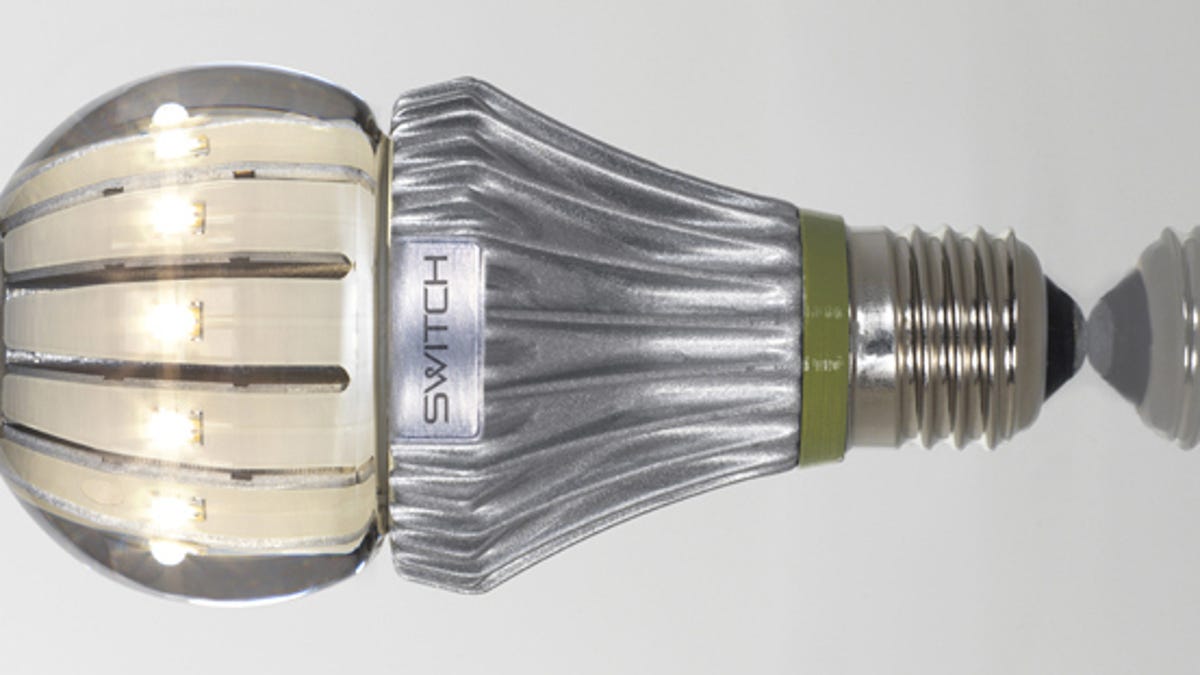Liquid-cooled LED bulbs ready for summer
Switch Lighting lines up distributors for LED bulbs that use a novel design to create even light and an attractive stand in for incandescent bulbs.

Switch Lighting's LED bulbs have similar technical specs to its competitors, but the startup is counting on clever design and good looks to stand out in a crowded field.
The company plans to make its first three general-purpose light bulbs available this summer to lighting distributors and today is expected to introduce a three-way bulb and a 240-volt bulb for markets outside the U.S.
Its first bulbs are replacements for 40-watt, 60-watt, and 75-watt incandescent lamps. Costing between $40 and $50, they are primarily aimed at commercial customers. Switch Lighting is also working on a less expensive consumer-oriented line due next year, according to a company executive.
This summer's product distribution, a bit later than originally planned, will mark the first release of the startup's novel LED bulb design.
Most LED bulbs place their LED chips -- the light source in this type of bulb -- at the base near the heat sink and socket. By contrast, the LED light sources in Switch Lighting's lamp are placed in the globe at the top half of the lamp. The globe is filled with liquid that circulates past the LED chips to the surface for cooling.
The design yielded a bulb that gives light off evenly and that better resembles traditional incandescent lamps, said Gary Rosenfeld, the executive vice president of marketing at Switch Lighting. It's been an advantage in hotels and other businesses that have exposed lamps: "People don't like anything that's too unusual," he said.
The company's 40-watt equivalent will consume eight watts and 75-watt equivalents will consume 17 watts. Later in the summer, it will have the three-way bulb and a 100-watt equivalent, Rosenfeld said. The company is also developing a lower-cost line of bulbs with more of a consumer focus, he said.

